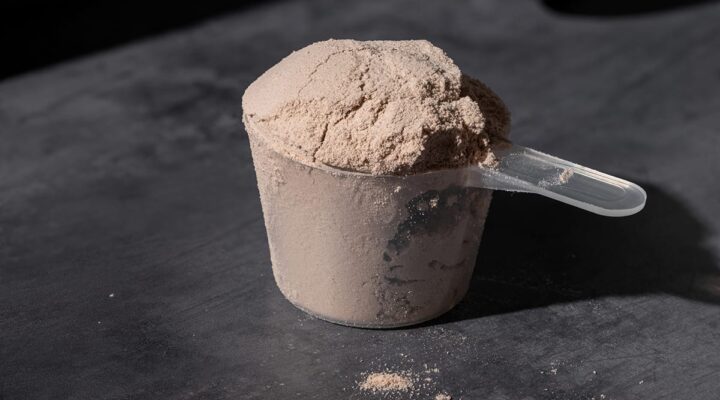Ask Dr Adam: Can You Reverse Type 2 Diabetes?

Statistics reveal that around 10.5% of adults aged 20-79 have diabetes, and almost half of those are unaware they have it. More startlingly, by 2045, projections estimate that 1 in 8 adults – about 783 million people – will be living with diabetes, marking a 46% increase.
What all types of diabetes have in common is high levels of glucose in the blood. Typically, it’s the pancreas’ job to sense when glucose enters the bloodstream. From here, it releases insulin into the body to help transfer sugar into cells for energy. But if you have diabetes, this system doesn’t function as it should.
Around 90% of people with the condition have type 2 diabetes, a subset which experts say is largely preventable through healthy lifestyle changes like eating a balanced diet and getting lots of exercise. But once you’ve received a diagnosis, is there a way to actively reverse it? We asked Form’s resident health expert, Dr Adam, to give us the facts.
Reversing or remission?
“Type 1 diabetes isn’t reversible,” says Dr Adam, “but when we’re thinking about type 2, it’s important to clarify what we mean by ‘reverse’. It’s more accurate to think of it as putting diabetes into remission rather than completely reversing it.”
A quick explainer: remission is when a person’s blood sugar levels return to normal or near-normal without the need for diabetes medications. This means that you can maintain healthy glucose levels, mainly through implementing lifestyle changes such as diet, exercise and weight management. However, remission doesn’t mean the disease is cured as such; diabetes can later return if those healthy habits aren’t properly maintained.
“The main driver of achieving diabetes remission is weight loss,” says Dr Adam. “When you look at groundbreaking studies like the Direct trial, or the approach now used to treat type 2 diabetes in people with obesity, the focus is often on getting them to lose weight – either through a very low-calorie diet or with bariatric surgery.”
Dr Adam explains that this weight reduction starts to undo the factors contributing to type 2 diabetes. “It’s focussed on reducing the fat ‘spillover,’” he explains. “Fat around the organs and muscles creates insulin resistance. So, when you lose weight, your fat cells shrink, especially the visceral fat surrounding your organs. That, in turn, makes your muscles more insulin-sensitive.
“In particular, people often forget how important the pancreas is in diabetes,” he continues. “It’s responsible for secreting insulin, but Type 2 diabetes isn’t just about insulin resistance. It’s also that the pancreas can’t produce enough insulin to overcome the resistance.”
In short, when your pancreas is compromised, you won’t produce enough insulin. “Fat accumulation in the pancreas can have a big effect on this, and the presence of glucose doesn’t trigger it as it should,” Dr Adam notes. “Weight loss improves all these things because you’re creating an energy deficit and reducing the factors that impair insulin receptor function and insulin secretion.”

Can anyone put type 2 diabetes in remission?
Not everyone with type 2 diabetes can achieve remission, but many have the potential to do so, especially if they catch the condition early and implement healthy habits. For example, a 5-10% weight reduction is often significant enough to create real benefits for glucose regulation, according to Dr Adam. “It also lowers the risk of cardiovascular complications, which are often tied to type 2 diabetes,” he says.
This weight loss should always be attempted by lifestyle changes like diet and exercise, but popular medications like Ozempic, a GLP-1 agonist, may sometimes be necessary. “These medications not only help with insulin release but also aid weight loss by curbing appetite. That can be useful in managing type 2 diabetes, though weight loss might reduce the need for medication over time.”
When it comes to dietary approaches, Dr Adam advises against overly restrictive diets. “Low-carb diets can help with weight loss, but the real focus should be on overall diet quality – like adopting a Mediterranean-style diet rich in whole foods and healthy fats. This way, you’re not just cutting out calories, but providing your body with the nutrients it needs so you stay fuller for longer.”

Practical steps for remission
As well as aiming to lose that 5-10% marker of your body weight through a plant-focussed diet, Dr Adam says that exercise plays a big role as well. “Studies have found that both resistance and endurance training can improve insulin sensitivity. Muscle health is really important for metabolic function as we age, so focus on lifting weights, aiming for a gradual progressive overload.”
Ultimately, when it comes to type 2 diabetes, prevention is the best route. “If you’ve been diagnosed with pre-diabetes, it should be a wake-up call.” This health condition happens when blood sugar levels are higher than normal but not high enough to be classified as type 2 diabetes. “The earlier you take action with your diet and lifestyle, the better your chances of avoiding long-term complications from a pre-diabetic diagnosis. There can often be a genetic link with diabetes so a diagnosis in your family can put you at a higher predisposition.”
While reversing type 2 diabetes isn’t always a linear approach, making lifestyle changes can massively impact your health. As Dr Adam puts it, “Don’t wait until you have diabetes to make changes. Start now to prevent complications down the line.”


















